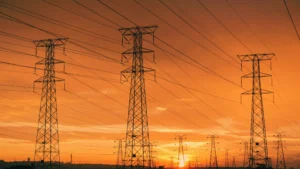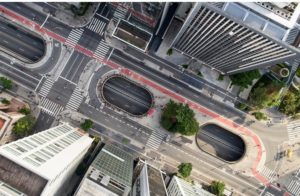How can utilities implement DERs in their capital planning?
There was a point last summer, as unprecedented heat gripped California and wildfires raged through the state, when it seemed like the power grid might collapse. It didn’t — but only thanks to efforts from local utilities and communities to conserve every last kilowatt of electricity. With climate change making natural disasters and severe weather events ever more common, however, that kind of last-ditch effort may not be replicable in the future.
But there’s a solution: distributed energy resources (DERs), which tap into renewable energy sources like solar and wind to make power grids more reliable and resilient.
DERs: What's their role?
Unlike central power stations, DERs are dispersed, usually near sites of electricity consumption, which has the effect of increasing the overall power supply while also minimizing the impact if any one part of the system is disrupted.
DER implementations are already taking shape. California requires solar panels to be installed on the roofs of all newly built houses, and it also requires connections for home battery systems. One property developer has taken advantage of these requirements to create a new subdivision in suburban Los Angeles that operates as a microgrid: all of the energy generated by those rooftop solar panels feeds into a network of batteries, which provides power whenever the sun isn’t shining.
In the case of a blackout, the batteries not only keep lights on in the subdivision, they can sell power to the larger grid through a net metering system, which can help restore power to other communities.
That kind of scenario will become even more widespread as more and more electric vehicles are capable of bidirectional charging. This effectively turns them into batteries on wheels, capable of storing solar power and sending it back to a home or the grid when it’s needed, something known as vehicle-to-home (V2H) and vehicle-to-grid (V2G) charging. Some of the world’s largest automakers are currently operating V2G trials in conjunction with local utilities across the United States.
DERs: An opportunity or challenge for utilities?
All of this is part of an ongoing trend towards renewable energy that has seen solar and wind farms pop up across the country. The federal government’s Inflation Reduction Act includes billions of dollars of incentives designed to electrify homes, transportation and industry while also boosting the amount of solar, wind and geothermal power sources, many of which will take the form of DERs.
This represents an enormous opportunity for utilities, but it also raises a number of questions.
What is the impact of DERs on transmission and distribution grids? How can they be integrated into the grid without compromising grid stability and reliability? How can you identify the necessary investments in infrastructure, or evaluate the cost of integrating DERs? What about potential revenue streams — or the impact of DERs on overall grid stability and reliability?
All of these are the types of questions utilities will need to answer as they move forward. And for that to happen, they need asset investment planning (AIP). It’s a way to prioritize grid modernization investments that supports their organization in the long term while also benefiting their customers — and without exacerbating existing disparities in access to energy.
Though installing rooftop solar may sound like a straightforward proposition to a homeowner, utilities know it’s more complicated than it seems. New technology and new processes pose a challenge to outdated bureaucratic procedures, not to mention physical infrastructure that needs to be upgraded.
If it’s not properly dealt with, the consequences can snowball into an unmanageable situation. Earlier this year, the operator of the largest electrical grid in the United States announced a two-year freeze on new DERs such as rooftop solar panels.
It’s a move that will allow it to clear out an enormous backlog of interconnection requests, but also to reform its own policies to better cope with future demands. The challenges of customers switching to prosumers, both producing and consuming energy, is real.
Each new DER is an asset and it needs to be considered as such. This means doing an impact assessment to consider risks, maintenance costs and how it can be incorporated into your financial planning. You’ll need to consider the impact of capacity fluctuations by mapping out all possible outcomes with planning for what-if scenarios and predictive analysis of network and consumer demands.
For instance, what happens as more electric vehicle charging stations are added: how do you accommodate the extra demand without creating extra strain on your grid? And what if more customers decide to create their own microgrids, which could decrease the energy load? There’s also variability to consider.
Batteries are still expensive and V2G charging is in its earliest stages, so for now, DERs can lead to volatility in supply and demand, since solar only produces energy when the sun is shining and wind power is only generated when there’s enough of a breeze. To anticipate these kinds of surges in demand, you need a clear picture of all your assets in order to better plan your grid design.
The challenges posed by DERs can make them sound like liabilities, but with the right planning, they’re just the opposite. Batteries can help utilities manage supply during peak demand periods while providing backup power during outages. Net metering allows individual customers to act as suppliers, using their own energy resources — like rooftop solar or backyard geothermal — to supply the grid when there are excessive demands or unexpected difficulties.
And in the context of the Inflation Reduction Act and a strong push towards electrification and renewable energy, DERs allow utilities to electrify in small steps, one section at a time, rather than all in one go.
Long-term, strategic capital investment strategies
That’s where AIP comes in. As a utility, you may know your objectives, but you may not be sure of the best path to take in order to achieve them. AIP allows you to make educated decisions on the impact of your strategy. The only way to adapt and mitigate any future challenges is through grid modeling and robust what-if scenario planning that takes into account financial trade-offs and risk identification, analysis and mitigation.
AIP allows you to create digital models to evaluate the impact of asset growth, different flows of energy and the multiplication of energy sources. When you have a digitized network, you can forecast the impact of DERs to see how they affect your bottom line, your networks and any of our individual assets at any point in the future.
California’s experience last summer was a lesson for everyone: we’re at a turning point in terms of energy needs. Utilities need to upgrade and modernize, but they need to work within constraints. And for that to happen, they need to plan for the future — with the right help.



